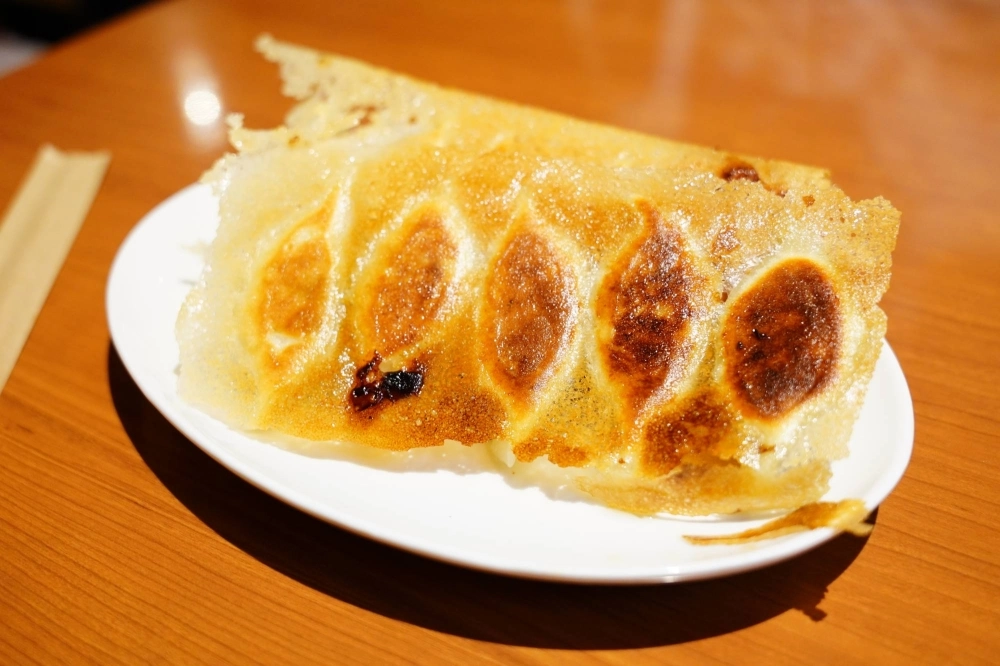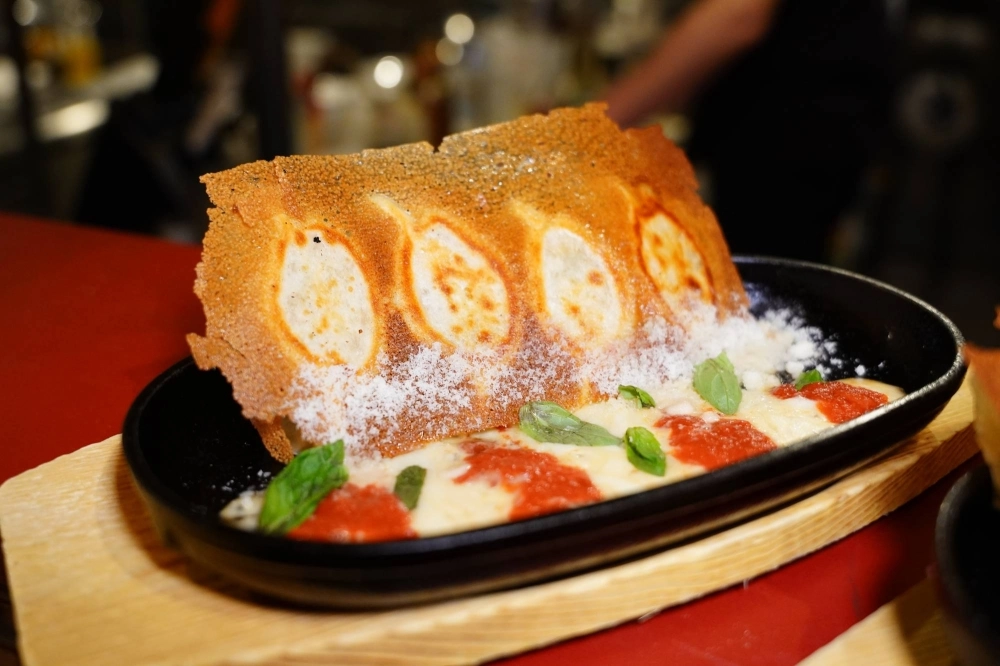Traveling around Japan, I come across what feels like an infinite number of dishes unique to different regions. It’s something I love about the country, but even more impressive is when something transforms from a regional quirk into its own dish entirely.
One such example is “winged” hanetsuki gyōza.
Much like regular yaki gyōza (fried dumplings), these morsels are filled with meat and vegetables, then steamed and fried. Where they differ from yaki gyōza is in the final step — the addition of crispy “wings” made with a flour and water mixture when frying.
I had mistakenly assumed that these crispy delights had been around for as long as yaki gyōza themselves, which date back to at least China’s Eastern Han Period (25–220 A.D.). In fact, hanetsuki gyōza’s original creator is still making them today.
Nihao
That creator is Isao Yagi, and his restaurant, Nihao, can be found in Tokyo’s Ota Ward, on the border with Kawasaki.
Ota Ward’s main connecting hub is Kamata Station. The area doesn’t feel much like Tokyo, but rather like a smaller city of its own. Stepping out of the station, I was greeted by a small park and medium-rise buildings filled with shops and apartments. From JR Kamata Station, it’s a brief 10-minute walk to hanetsuki gyōza bliss; from Keikyu-Kamata Station, you’re practically already there.
Despite being the birthplace of this famous dumpling, there is nothing overly extravagant or boastful about Nihao. It’s a simple space with a red awning and cute bubble letters, replete with the reds and yellows typical of many Chinese establishments.
I meet Yagi, 90 years old this year, at the honten (main store), but we quickly cross the road to Nihao’s second, larger location, this one decorated with photos of noteworthy guests such as competitive eater Gal Sone, along with warm lighting and simple but comfortable furniture.
We sit down, and Yagi guides me through a winding narrative, starting with his move from China to Japan in 1979. After arriving here, his first thought was to learn the language so he could make a living.
Before setting up his restaurant, he mainly stuck to cooking the kind of boiled dumplings that are popular in China. While that style of gyoza is popular here, too, his Japanese-language teacher eventually pointed out to him that Japanese diners tend to prefer their dumplings fried rather than boiled. To get a feel for yaki gyōza, Yagi went with his teacher to restaurants around Tokyo in places such as Takadanobaba, Jiyugaoka and Shimbashi to try them out.
“I would sit and watch them make it, but when I ate it I thought, ‘These aren’t very good,’” Yagi says.
Instead, he took to the kitchen and began studying, experimenting with different ingredients and recipes on his own. One day while cooking, Yagi recalled the delicious, crispy-bottomed sheng jian bao (fried pork buns) of his youth in Dalian, northeastern China. He decided to try a similar technique with his gyōza, pouring in flour and water at the end to make them crispy, and resulting in what we now know as hanetsuki gyōza. His teacher, thrilled with the results, encouraged him to open a restaurant.
Opened in 1983, Nihao was quick to gain popularity, but Yagi tells me it wasn’t until 1986 that he settled on the name “hanetsuki gyōza” for his new style of dumpling.
“A TV station came around ... and said, ‘These gyōza look like they can fly!’” Yagi recalls. “And from there, everyone said, ‘Why not call them winged gyōza?’”
Despite being well past retirement age, Yagi continues to make his own gyōza and takes fierce pride in maintaining quality across each cadet restaurant, saying that he tastes them every single day.
“Our Ginza branch was doing well in terms of profit, but we closed it down,” he says. “The reason being that customers would come here (to the main store) and complain, telling me the flavor was different there (in Ginza).”
That signature flavor is exactly what you would expect if you imagine a hanetsuki gyōza. The wings are crispy and light, while the skin is thick yet smooth. Biting into a piece, there are distinct chunks of meat and cabbage that contribute to its overall juiciness — Yagi explains this is thanks to always chopping ingredients by hand instead of using any kind of machine processing.
I had been barreling through the plate of steamy gyōza when Yagi tells me to try one without the classic gyōza dipping mix of soy sauce and vinegar, and to savor the pure flavor of the gyōza itself. To that end, Nihao doesn’t provide any rāyu (chili oil) either, as Yagi believes that gets in the way of his intended flavors.
Yagi is right — the flavors of the juicy meat filling stand on their own. But I must admit I couldn't resist going back for some of that tangy vinegar dip I have come to associate so closely with gyōza in Japan.
Benvenuto
As Yagi saw increasing success, he recruited younger relatives to help out in his restaurants, and two of them went on to establish their own gyōza eateries, one of which is Kangei, a chain that also goes by its Chinese name, “Huanying.”
For something a little different in the hanetsuki gyōza lineage, there’s Benvenuto, a branch of Kangei with Italian flair. It’s within walking distance from both Nihao’s main shop and Kamata Station.
At Benvenuto, the gyōza aren’t the main attraction. Their promotion only goes as far as one illustrated page in the menu. Inside, the atmosphere is more like that of a cozy bistro, complete with handwritten blackboard menus and a line of wine bottles above the counter.
Hanetsuki gyōza still feature, and there are three types to choose from: margherita, quattro formaggi and regular. Also available are four sauces: Kangei’s standard garlic soy, black pepper vinegar and vinegar soy sauce and rāyu, as well as Benvenuto’s own original basil.
Having had my fill of “normal” hanestuki gyōza, I order the margherita and quattro formaggi, and when head chef Takumi Motomiya mentions that these are often paired with Benvenuto’s “lemon sparkling,” a sparkling white wine with frozen lemon, I can’t resist.
The wine goes particularly well with the black pepper and cheese of the quattro formaggi hanetsuki gyōza. The gyōza themselves have a satisfyingly thick skin and light, crispy “wings,” as you’d expect. They are standard Kangei gyōza on the inside — which is to say juicy, gingery, and with a chewy skin — simply dressed up with cheese, and, in the case of the margherita gyōza, a tomato sauce and fresh basil. This was a little surprising, but I can’t say it didn’t taste delicious, and the sauce and pork pairing reminded me a bit of European sausage flavors.
One of the reasons Benvenuto started was because the owner visited a “Champagne gyōza” restaurant and was convinced that, with the help of Motomiya’s Italian cooking, they could make an even better version.
In many ways, Nihao and Benvenuto couldn’t be more different. But linked by Yagi and his hanetsuki gyōza, they’ll continue to fool others, like they did me, into believing that these winged dumplings have been around for centuries.


























With your current subscription plan you can comment on stories. However, before writing your first comment, please create a display name in the Profile section of your subscriber account page.